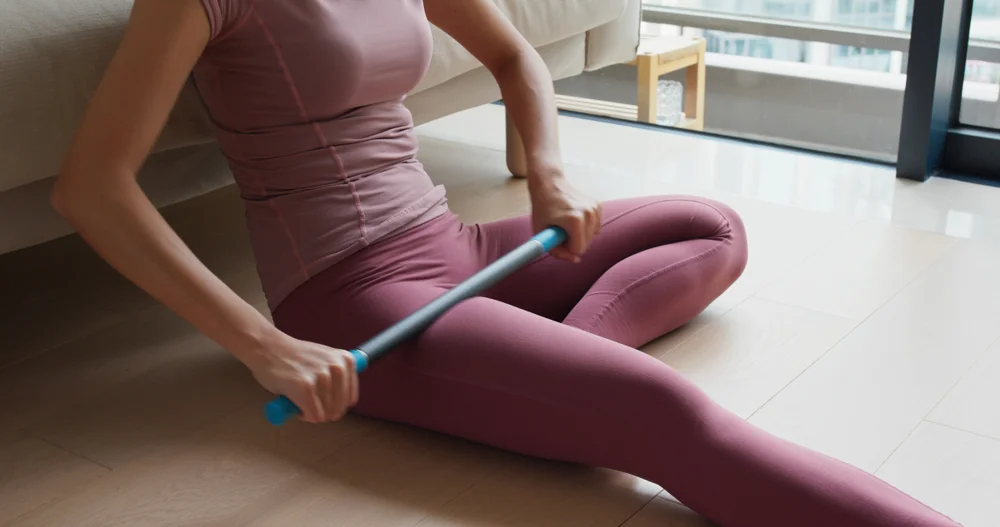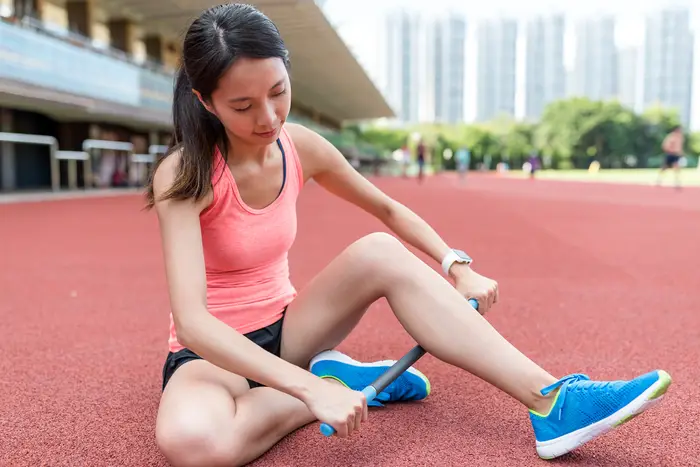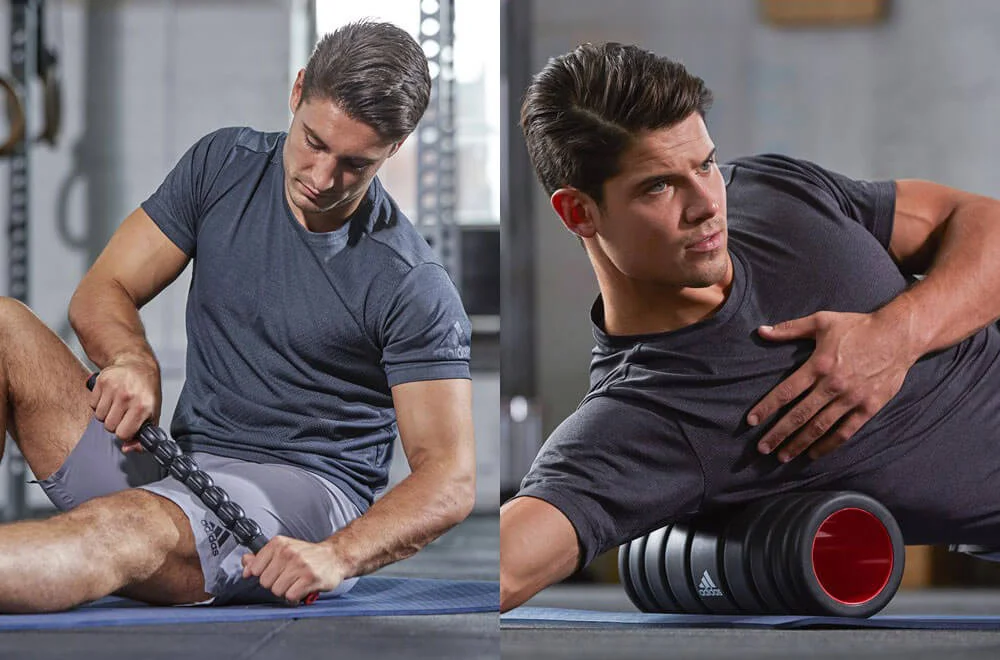Muscle Roller Stick: Your Ultimate Tool for Recovery and Performance
In the world of fitness and recovery, the importance of proper muscle care cannot be overstated. Muscle soreness, tightness, and limited flexibility can hinder performance and delay progress. One of the simplest yet most effective tools for muscle recovery is the muscle roller stick. This portable, easy-to-use tool is a game-changer for athletes, gym enthusiasts, and anyone seeking relief from muscle tension.
Whether you’re recovering from an intense workout or dealing with everyday muscle fatigue, a muscle roller stick is a versatile addition to your recovery routine. In this guide, we’ll explore everything you need to know about muscle roller sticks, from their benefits to expert usage tips.
What Is a Muscle Roller Stick?
A muscle roller stick is a handheld recovery tool designed to massage and relieve tight muscles. It typically consists of a cylindrical rolling surface attached to handles, allowing for precise control and targeted pressure. Unlike foam rollers, which require body weight to apply pressure, muscle roller sticks are manually operated, making them highly portable and versatile.

How It Differs from Other Tools
- Foam Rollers: These are bulkier and rely on body weight for pressure. Muscle roller sticks, on the other hand, offer greater precision and are easier to use on smaller muscle groups.
- Massage Guns: While massage guns provide deep percussive therapy, muscle roller sticks are quieter, more affordable, and require no batteries or charging.
Materials and Design
Most muscle roller sticks are made from durable plastic or metal with rubberized grips for easy handling. The rolling surface may be smooth or textured, catering to different preferences for massage intensity.
Benefits of Using a Muscle Roller Stick
Relieves Muscle Soreness and Tightness
One of the primary functions of a muscle-roller stick is to release tension in tight muscles. This is achieved through myofascial release, a technique that targets the fascia, or connective tissue, surrounding the muscles. By breaking up adhesions and improving tissue elasticity, the roller stick helps reduce delayed onset muscle soreness (DOMS) and promotes faster recovery.
Improves Blood Circulation
Using a muscle-roller stick enhances blood flow to targeted areas. Increased circulation delivers oxygen and nutrients to muscles while flushing out metabolic waste, such as lactic acid. This accelerates the healing process and reduces inflammation.
Increases Flexibility and Range of Motion
Regular use of a muscle-roller stick can improve muscle pliability, leading to better flexibility and an expanded range of motion. This is especially beneficial for athletes, as it reduces the risk of injury and enhances performance during physical activities.
Portable and Easy to Use
Unlike larger recovery tools, muscle-roller sticks are compact and lightweight. They fit easily into gym bags or backpacks, making them perfect for on-the-go recovery. Their simplicity ensures that even beginners can use them effectively.
How to Use a Muscle-Roller Stick Effectively
Basic Techniques for Beginners
- Apply Moderate Pressure: Start with gentle pressure to avoid discomfort, gradually increasing intensity as needed.
- Roll Slowly: Move the roller stick at a slow, steady pace over the muscle group. Spend 1-2 minutes on each area for optimal results.
- Maintain Proper Posture: Sit or stand in a comfortable position to ensure controlled movements and prevent strain.
Targeting Specific Muscle Groups
- Legs: Roll over the quads, hamstrings, and calves to relieve tightness after running or leg-intensive workouts.
- Upper Body: Focus on the shoulders, arms, and back to ease tension from weightlifting or desk work.
- Feet: Use the roller stick under the arches of your feet to alleviate soreness and improve flexibility.
Common Mistakes to Avoid
- Rolling Too Fast: Quick movements reduce the effectiveness of the massage and may irritate the muscles.
- Applying Excessive Pressure: Over-rolling or using too much force can lead to bruising or discomfort.
- Ignoring Sensitive Areas: Avoid rolling over joints, bones, or injured areas to prevent further damage.

Choosing the Right Muscle Roller Stick
Factors to Consider
- Size and Portability: Opt for a compact roller stick if you need a travel-friendly option. Larger sticks may be better for covering broad muscle groups.
- Material and Durability: Look for sturdy materials that can withstand consistent use. Rubberized handles ensure a firm grip.
- Special Features: Some roller sticks have textured surfaces for deeper massage or detachable parts for versatility.
Top Recommendations
- Basic Smooth Roller Stick: Ideal for beginners and general use.
- Textured Roller Stick: Perfect for those who prefer a deeper, more intense massage.
- Dual-Handle Ergonomic Stick: Offers better control and comfort during use.
Muscle Roller Stick vs. Other Recovery Tools
Comparison with Foam Rollers
- Portability: Muscle-roller sticks are easier to carry and use in confined spaces.
- Precision: Sticks allow for more targeted pressure on specific muscle groups, unlike foam rollers, which are better for larger areas.
Comparison with Massage Guns
- Cost: Roller sticks are significantly more affordable.
- Ease of Use: Unlike massage guns, sticks require no power source and are quieter, making them ideal for travel or quiet environments.

Expert Tips for Optimal Recovery
- Pair Rolling with Stretching: Follow up your rolling session with dynamic stretches to maximize flexibility and reduce soreness.
- Stay Hydrated: Proper hydration helps flush out toxins and supports muscle recovery.
- Consistency is Key: Use the muscle-roller stick regularly to maintain muscle health and prevent stiffness.
- Listen to Your Body: Avoid rolling over areas that feel excessively painful or sensitive. Adjust the pressure as needed.
Common FAQs About Muscle Roller Sticks
Are Muscle Roller Sticks Safe for Everyone?
Yes, they are generally safe for all fitness levels. However, individuals with severe injuries or medical conditions should consult a professional before use.
How Often Should I Use a Muscle-Roller Stick?
For best results, use the roller stick 3-4 times a week or after intense workouts. Daily use is also safe for mild tension relief.
Can It Help with Chronic Pain Conditions?
While not a cure, muscle-roller sticks can alleviate symptoms of chronic pain by improving circulation and reducing muscle tension. Consult a healthcare provider for personalized advice.
Conclusion
A muscle roller stick is a versatile and effective tool for improving recovery, enhancing flexibility, and reducing muscle tension. Whether you’re an athlete, a busy professional, or someone seeking relief from daily muscle fatigue, this tool can make a significant difference in your routine.
Start incorporating a muscle-roller stick into your recovery plan today and experience the benefits firsthand. Have questions or tips about using muscle-roller sticks? Share them in the comments below and join the conversation!
